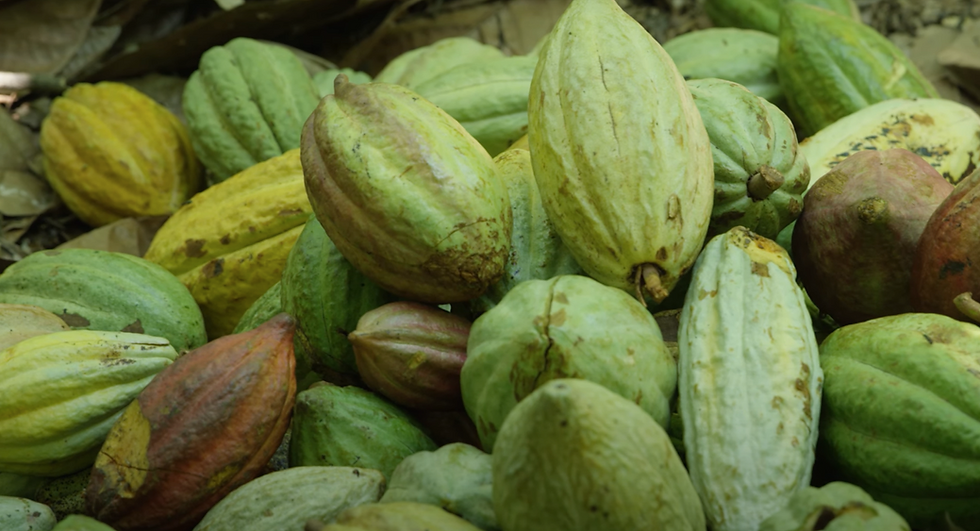Planting Cacao for Agribusiness
- Mar 6
- 3 min read
Cacao farming has emerged as a lucrative agribusiness opportunity, particularly in tropical regions where the plant thrives. With increasing global demand for chocolate and other cacao-based products, many entrepreneurs and farmers are turning to cacao cultivation as a sustainable and profitable venture. Here are the essentials of planting cacao for agribusiness, from site selection and soil preparation to harvesting and market considerations.

Understanding Cacao Farming
Cacao (Theobroma cacao) is a small evergreen tree native to the tropical rainforests of Central and South America. It thrives in hot, humid environments with consistent rainfall. The tree produces pods containing cacao beans, which are the primary ingredient in chocolate production.
Benefits of Cacao Agribusiness
High Market Demand: The global chocolate industry is worth billions of dollars, with increasing consumer demand for premium and organic chocolates.
Long-Term Investment: Once established, a cacao plantation can be productive for decades with proper care.
Sustainable Income: Farmers can generate income through fresh pod sales, fermented and dried beans, or processed cacao products.
Agroforestry Potential: Cacao can be intercropped with other crops such as bananas, coconuts, and timber trees, promoting biodiversity and soil conservation.

Step-by-Step Guide to Planting Cacao
1. Site Selection
Cacao trees grow best in regions with:
Tropical Climates: 20-30°C temperature range, with at least 1,500-2,000 mm of annual rainfall.
Partial Shade: Cacao thrives under a canopy, often grown with taller trees like coconut or banana.
Well-Draining Soil: Loamy, slightly acidic soils (pH 5.0-6.5) are ideal.
Altitude Consideration: Cacao grows well at altitudes up to 1,000 meters above sea level.
2. Selecting Cacao Varieties
There are three main types of cacao:
Criollo: Produces high-quality beans but is less resistant to diseases.
Forastero: More robust and widely cultivated, though considered lower in quality.
Trinitario: A hybrid variety that balances quality and disease resistance.
Choosing the right variety depends on climate conditions, market demand, and farm management capacity.
3. Propagation and Seedling Preparation
Cacao can be propagated through:
Seeds: Fresh, healthy seeds should be planted within a week of harvesting to ensure viability.
Grafting: A method used to combine disease-resistant rootstocks with high-yielding scions.
Budding and Cuttings: These methods ensure consistency in fruit quality and early maturity.
Nursery-raised seedlings should be hardened before transplanting to the field.
4. Land Preparation and Planting
Clearing and Layout: Clear weeds and mark planting holes (3m x 3m spacing for optimal growth).
Soil Enrichment: Apply compost or organic matter to improve fertility.
Planting Techniques: Seedlings should be planted at the onset of the rainy season, ensuring they are well-watered and shaded.

5. Proper Maintenance and Care
Watering and Fertilization
Young cacao plants require consistent moisture but should not be waterlogged.
Organic compost and balanced fertilizers rich in nitrogen, phosphorus, and potassium help promote growth.
Pruning and Shade Management
Regular pruning improves air circulation and prevents disease.
Shade trees should be managed to allow enough sunlight while protecting young plants from excessive heat.
Pest and Disease Control
Common threats include:
Black Pod Disease (Phytophthora spp.): Controlled through proper drainage and fungicide application.
Cacao Pod Borer: Managed through pod wrapping and pheromone traps.
Mirid Bugs: Can be controlled with natural predators or organic pesticides.

6. Harvesting and Post-Harvest Processing
Harvesting
Cacao trees begin bearing fruit 3-5 years after planting.
Pods should be harvested when they turn yellow or red, depending on the variety.
Avoid damaging young flowers and pods when harvesting.
Fermentation and Drying
Fermentation: Enhances flavor by breaking down tannins and developing chocolate aroma.
Drying: Sun-drying reduces moisture to about 7%, preventing mold growth.
Storage: Properly dried beans should be stored in breathable sacks in well-ventilated areas.
7. Value Addition and Marketing Strategies
Processing Options
Farmers can increase profitability by processing cacao into:
Cacao nibs and powder
Chocolate bars and confectionery
Cacao butter and cosmetics
Market Channels
Local Buyers: Chocolate manufacturers and cooperatives.
Export Market: Specialty chocolate markets in Europe, the US, and Asia.
Direct Consumer Sales: Online platforms, farmers’ markets, and organic food stores.
8. Financial Considerations and Profitability
Investment Costs: Includes land preparation, seedlings, fertilizers, and labor.
Revenue Streams: Fresh pod sales, fermented beans, or value-added products.
Break-even Analysis: Cacao farms typically reach profitability within 5-7 years.
9. Government Support and Incentives
Many governments and agricultural organizations offer:
Subsidies for seedlings and fertilizers
Training programs and technical assistance
Loans and grants for agribusiness development

Cacao farming presents a profitable and sustainable agribusiness opportunity. With proper site selection, good agricultural practices, and efficient marketing strategies, farmers can build a successful cacao enterprise. Investing in quality seedlings, soil management, and post-harvest processing will ensure a high-quality product that meets market demands. As global chocolate consumption continues to rise, now is an excellent time to start a cacao farming business.















